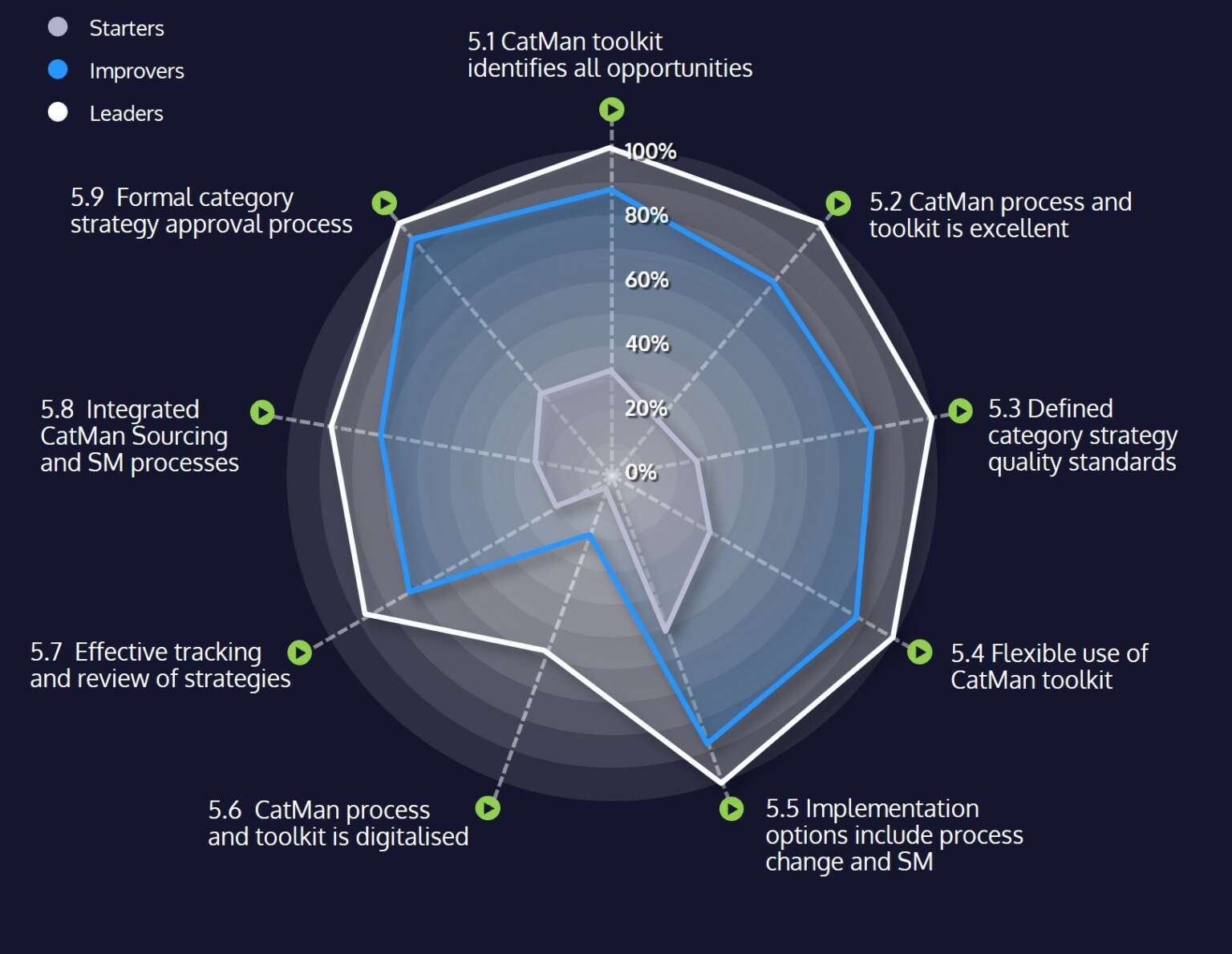
Category management report
Category Management process and technology – Why is it important?
By Future Purchasing |
Process & technology is the design, build and continuous improvement of a practical category management process and toolkit. Processes typically include:
- Process steps that outline the key activities in scope
- ‘How-to’ guides that detail how to complete key activities
- Templates to document the thinking and create an output
Category management processes are best developed using a representative design team from across the procurement function to ensure a ‘fit-for-purpose’ process & toolkit plus buy-in from the team.
The importance of process and technology
The best category management processes actively stimulate stakeholder engagement, collaboration and identification of opportunities.
By making category strategy creation a consistent, standardised and easy-to-do activity, it allows category managers to focus on using the facts and data to provide insight and identify opportunities for improvement and innovation. Leading organisations invest time and resources to build a ‘fit-for-purpose’ process that is aligned to the ways of working, language and culture of the organisation.
The category management process should be supported with an easy-to-understand visual model that can be used for communication purposes within procurement and with stakeholders. This model should show how category management connects with supplier management and annual prioritisation activities with stakeholders.
The survey shows that only 46% of all respondents believe that their category management process guides category teams to identify all available improvement. This reinforces the view that most teams are leaving substantial amounts of value untapped across their spend categories.
What our global category management survey tells us about process and technology
In summary
The overall score for process and technology across all respondents has decreased from 47% to 40% compared with the 2019-20 survey.
The highest score was Q5.5 at 60% which asked whether organisations’ category strategy implementation options included process change and supplier management as well as sourcing. Although this was a new question, the high scores indicated that most respondents thought they covered all these different options which was very encouraging.
The lowest score in the entire survey was for Q5.6 about digitalising your category management process & toolkit using artificial intelligence which scored 10%. Improvers scored 19% with starters at 4%. This was a new question but highlights the fact that there is a very long way to go for most organisations to developing this digital space.

Key recommendations
Leaders v Starters performance gap
1. Ensure your category management process & toolkit can be used flexibly for different levels of category maturity and complexity to help gain consistency in approach for all categories.
3x
2. Make sure your category management toolkit enables category teams to identify all available value opportunities including cost reduction, risk reduction, revenue & value enhancement.
3x
3. Define your category strategy quality standards to enable assessment of category strategies and create an exemplar strategy to show clearly “what a good strategy looks like”. (Quick Wins)
4x
4. Design a category management process and toolkit that is excellent and includes easy-to-use templates, easy-to-understand “how-to” guides, clear process steps and ways of working.
5x
Let’s Talk
If you want to get more value out of your procurement spend, or you just want to know more about us, request a callback above or send us an email and we will come straight back to you.




